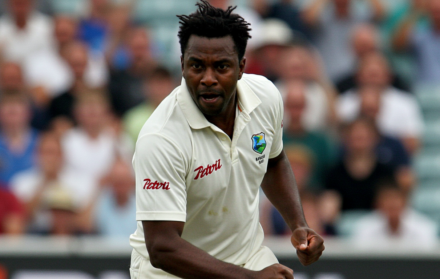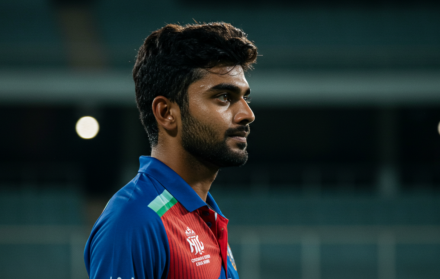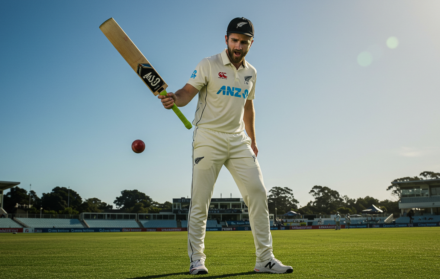
How Cricketers Train and Prepare for Matches
Cricket, with its rich history and evolution, has seen a significant transformation in how players train and prepare for their games. Gone are the days when talent alone could guarantee success. In the contemporary landscape of cricket, a cricketer’s training regimen is as vital as their natural ability. This comprehensive approach to preparation is what distinguishes the good from the great, the players from the champions. It involves a meticulous blend of physical fitness training, technical skill development, mental conditioning, and strategic game planning. Each of these components plays a crucial role in a cricketer’s readiness for the game, ensuring they are equipped to face the challenges of the pitch with confidence and agility.
Physical fitness stands as the cornerstone of a cricketer’s regimen. The demands of the game require players to possess endurance, strength, and flexibility, enabling them to endure long hours on the field with consistent performance. Training sessions often include a mix of cardiovascular exercises, strength training, and flexibility routines, tailored to enhance the specific physical capabilities needed in cricket. This physical conditioning is not just about sustaining performance but also about reducing the risk of injury, allowing players to maintain a longer and more fruitful career.
Parallel to physical fitness is the development of technical skills. Cricket is a game of precision, where the mastery of batting, bowling, and fielding techniques can set a player apart. This aspect of preparation involves countless hours of practice, often under the guidance of seasoned coaches, to refine skills, perfect the art of timing, and understand the mechanics of movement. Technology, too, has found its place in modern training techniques, with video analysis becoming a key tool for players to critique their form and devise improvements.
Mental conditioning is another critical element of a cricketer’s preparation. The mental game of cricket is as demanding as its physical counterpart. Players must possess the ability to stay focused, manage stress, and make quick decisions under pressure. This requires not only natural mental fortitude but also trained psychological resilience. Techniques such as visualization, meditation, and cognitive behavioral strategies are increasingly incorporated into training programs to enhance mental toughness, concentration, and game-day performance.
Finally, strategic game planning is what ties all these elements together. Understanding the opposition, analyzing match conditions, and devising game strategies are crucial for success. This involves studying past performances, both of the team and the opponents, and planning for various game scenarios. The ability to adapt strategy based on the match situation is what often differentiates victory from defeat.
As we delve deeper into the main sections of this article, we will explore each of these components in detail, uncovering the secrets behind the rigorous training and meticulous preparation of cricket’s finest athletes. We will journey through the physical regimens that build the foundation of a cricketer’s performance, the technical drills that fine-tune their skills, the mental conditioning that sharpens their focus, and the strategic planning that guides their game.
This comprehensive exploration will not only illuminate the hard work and dedication behind the scenes but also inspire fans and aspiring cricketers alike to appreciate the depth of preparation that goes into each match. Through this, we aim to provide a holistic view of the modern cricketer’s journey to excellence, showcasing the blend of tradition and innovation that characterizes their path to success.
Physical Training for Cricketers

When it comes to training for cricket matches, one aspect that plays a vital role is physical training. This section explores the various dimensions of physical training that cricketers engage in to enhance their performance on the field.
From building strength to improving endurance, agility, and flexibility, we’ll uncover the different elements that contribute to a cricketer’s overall physical preparedness. So, let’s step into the realm of physical training for cricketers and discover the intense routines that help them overcome challenges with unwavering prowess.
Strength Training
Strength training is essential for cricketers to optimize their performance on the field. It plays a vital role in enhancing power, speed, and overall strength, while also minimizing the risk of injuries. Here are some key components that should be included in a cricketer’s strength training regimen:
Incline clap press-ups: This exercise primarily targets the upper body and core, contributing to the development of explosive power.
Smiths machine incline bench throw: It focuses on building upper body strength, specifically in the chest and triceps muscles.
Medicine ball overhead throw: This exercise aids in the improvement of power and rotational strength, which are crucial for effective bowling and batting.
Vertical jumps: This movement helps enhance explosive leg power and facilitates quick movements on the field.
Power movements: It is beneficial to include exercises such as cleans and snatches in the training routine to enhance overall power production.
Strength movements: Incorporating exercises like squats, deadlifts, and bench presses helps in building muscle strength and stability.
By incorporating a comprehensive strength training program, cricketers can significantly enhance their performance and excel in the sport.
Endurance Training
Endurance training is a crucial part of a cricketer’s preparation for matches. Here is a list of steps involved in the process of endurance training:
- Incorporate endurance training exercises like running, cycling, or swimming into regular training sessions.
- Gradually increase the duration and intensity of the workouts to enhance stamina.
- Include interval training to improve cardiovascular fitness and simulate match conditions, a key aspect of endurance training.
- Incorporate cricket-specific movements, such as running between wickets and engaging in fielding drills, to boost endurance in scenarios specific to cricket.
- Ensure to follow proper warm-up and cool-down routines to prevent injuries and facilitate recovery during endurance training.
Speed and Agility Training
To enhance speed and agility in cricket, cricketers can follow these steps:
- Perform dynamic warm-up exercises like high knees, butt kicks, and lateral lunges.
- Incorporate sprinting drills, such as shuttle runs and ladder drills, to improve speed and agility.
- Practice quick change of direction movements through agility ladder drills, cone drills, and lateral shuffles to enhance agility.
- Include plyometric exercises like box jumps and lateral bounds to develop explosive power and improve speed and agility.
- Focus on footwork and reaction time by incorporating reaction drills and agility ladder footwork drills to enhance speed and agility.
Pro-tip: Make sure to combine speed and agility training with proper strength training to maximize performance on the cricket field.
Flexibility and Mobility Training
To enhance performance and reduce the risk of injury, cricketers actively participate in flexibility and mobility training to optimize their performance on the field. Here are some steps to follow:
1. Stretching: Prior to training, cricketers should engage in dynamic stretches to loosen up their muscles and increase their range of motion.
2. Joint Mobility Exercises: It is important to focus on movements that enhance joint flexibility and mobility, such as shoulder rotations and ankle circles.
3. Foam Rolling: Cricketers can effectively release tension in their muscles and break up any knots or adhesions by incorporating foam rolling into their routine.
4. Yoga or Pilates: The integration of yoga or Pilates practices can greatly improve overall flexibility, balance, and core strength.
5. Active Recovery: On rest days, it is essential to include light exercises and stretches to promote muscle recovery and maintain flexibility.
6. Regular Massage or Self-Massage: By incorporating regular massage therapy or self-massage, cricketers can enhance muscle relaxation, improve blood circulation, and aid in mobility.
By integrating flexibility and mobility training into their regular routine, cricketers can optimize their performance on the field.
Technical Training for Cricketers

When it comes to training and preparing for matches, cricketers know the significance of technical training. In this section, we’ll dive into the world of technical training for cricketers, exploring various facets like batting techniques, bowling techniques, fielding techniques, and wicket-keeping techniques.
Get ready to uncover the secrets behind these essential skills that help cricketers excel on the pitch. So, grab your bat, lace up your boots, and join us as we explore the technical side of the game like never before!
Batting Techniques
- Grip: A powerful and controlled shot in cricket requires the proper grip on the bat. The top hand provides stability, while the bottom hand generates power.
- Stance: An essential aspect of batting techniques is a solid and balanced stance. A batsman should have their feet shoulder-width apart and evenly distribute their weight. Additionally, the head should remain still and the eyes focused on the bowler.
- Backlift: In cricket, a high and close backlift position of the bat before the ball is bowled allows for a fuller range of shots.
- Footwork: Optimum footwork is vital for efficient and quick movement while batting. The front foot should move towards the pitch of the ball, while the back foot provides balance and power for the shot.
- Shot selection: When batting, it is crucial for a batsman to assess the line, length, and pace of the ball to select the appropriate shot. Playing with patience and selecting the right shot based on the situation is essential.
Fact: One of the most well-known batting techniques in cricket is the “forward defensive.” Here, the batsman leans forward and defends the ball with a straight bat to minimize the risk of getting out.
Bowling Techniques
- Grip: Mastering bowling techniques requires a strong grip on the ball. There are two main types of grips: the off-spin grip and the leg-spin grip.
- Run-up: A smooth and balanced run-up is crucial in bowling techniques as it helps generate power and maintain accuracy.
- Delivery stride: The length and timing of the delivery stride play a significant role in determining the pace and accuracy of bowling techniques.
- Follow-through: To maintain momentum and reduce the risk of injury, a controlled and balanced follow-through is essential in bowling techniques.
- Variations: Developing variations such as swing, seam, and spin is key in bowling techniques as it keeps the batsmen guessing.
True story: In a crucial final match, a young bowler demonstrated his mastery of bowling techniques by utilizing his exceptional grip and showcasing various variations. His precise run-up and powerful delivery stride greatly contributed to his success. Additionally, his well-executed follow-through displayed his control and minimized any chances of injury. This victory clearly emphasized the significance of mastering bowling techniques in the game of cricket.
Fielding Techniques
Fielding is a crucial aspect of cricket and mastering the right techniques can greatly enhance a player’s performance. Here are some fielding techniques to incorporate into your training:
- Catching: Practice catching high and low balls, both in front and to the side, focusing on a secure grip and soft hands.
- Ground fielding: Develop agility and quick reflexes through drills like short sprints, dive stops, and quick pickups.
- Throwing: Work on accuracy, speed, and power by practicing throwing from various angles and distances.
- Backing up: Position yourself strategically to support your teammates, ensuring you are ready to field any missed balls.
- Communication: Effective communication and coordination with teammates is crucial to avoid confusion and maximize fielding efficiency.
Pro-tip: Regular practice and drills focusing on fielding techniques can greatly improve your overall cricket performance. Aim to incorporate fielding exercises into your training regimen to enhance your skills and become a valuable asset to your team.
Wicket Keeping Techniques
Wicket keeping in cricket requires specific techniques to excel in this position. Key wicket keeping techniques include:
- Stance: Adopt a balanced crouched position with weight on the balls of your feet.
- Glove work: Master the art of catching the ball with proper hand positioning and soft hands.
- Footwork: React quickly to the ball, using small, nimble steps to move laterally or forward and back.
- Communication: Develop effective communication skills with the bowler and fielders.
- Keeping techniques: Learn to anticipate and react to different types of deliveries, including fast bowling and spin.
- Diving and stopping: Practice diving and stopping the ball to prevent runs and dismiss batsmen.
- Catching and stumpings: Enhance your catching skills and footwork behind the stumps for stumpings.
Mental Preparation for Cricketers

Cricketers know that mental preparation is just as crucial as their physical training. In this section, we’ll explore the essential aspects of mental preparation for cricketers. From harnessing the power of visualization and imagery to developing mental toughness and resilience on the field.
We’ll also dive into the importance of focus and concentration and how cricketers manage pressure and performance anxiety. Get ready to uncover the strategies that top cricketers use to strengthen their minds and elevate their game.
Visualisation and Imagery
Visualisation and imagery are vital techniques utilized by cricketers to enhance their performance and mental preparation.
By visualizing successful outcomes and mentally rehearsing skills, cricketers build mental resilience and improve performance under pressure. Incorporating regular visualisation and imagery exercises into training routines can have a significant impact on a cricketer’s game.
Suggestions for effective visualisation include vividly imagining successful shots, fielding maneuvers, and crucial game situations. Practicing these techniques alongside physical training can lead to improved performance on the cricket field.
Mental Toughness and Resilience
Cricketers need to cultivate mental toughness and resilience to excel in matches. Mental preparation encompasses various vital elements, such as visualization and imagery techniques, enhancing mental toughness and resilience, sustaining focus and concentration, and effectively managing pressure and performance anxiety.
Visualization and imagery exercises serve as effective tools for cricketers to visualize success and enhance their performance. Developing mental toughness and resilience requires the development of mental strength and the ability to bounce back from setbacks.
Maintaining focus and concentration plays a crucial role in staying attuned to the game and making swift decisions. Efficiently managing pressure and performance anxiety assists cricketers in handling high-pressure situations and performing exceptionally well under stress.
Focus and Concentration
Maintaining focus and concentration is of utmost importance for cricketers to achieve peak performance during matches. Here are some essential steps to naturally enhance focus and concentration:
- Engage in mindfulness and meditation techniques to elevate mental clarity.
- Incorporate visualization exercises into your pre-match routine to sharpen your focus on the game.
- Establish specific goals for every match to stay motivated and keep your mind fully engaged.
- Avoid distractions, such as excessive use of electronic devices, both during training sessions and matches.
- Strengthen your mental resilience through techniques like positive self-talk and reframing negative thoughts.
- Continuously evaluate and adjust your concentration strategies to discover the ones that work best for you.
Managing Pressure and Performance Anxiety
- Managing pressure and performance anxiety is crucial for cricketers in order to perform at their best during matches. Here are some steps to help cricketers effectively manage pressure and performance anxiety:
- Develop mental resilience through techniques like visualization and imagery.
- Enhance focus and concentration by practicing mindfulness and mental exercises.
- Learn to manage pressure by developing coping strategies such as deep breathing or positive self-talk.
- Set realistic goals and focus on the process rather than the outcome.
- Seek support from sports psychologists or mental performance coaches.
- Implement pre-game routines and rituals to create a sense of familiarity and control.
Diet and Nutrition for Cricketers

Fueling the body for peak performance is crucial for cricketers. In this section, we will uncover the secrets of diet and nutrition. Discover the significance of maintaining a balanced diet, the impact of proper hydration on optimal performance, and the importance of strategic eating before, during, and after matches. Get ready to dive into the world of nutritional strategies that drive cricketers to excel on the field!
Importance of a Balanced Diet
A balanced diet is crucial for cricketers to perform at their best. It provides the necessary nutrients and energy to support physical and mental performance. A diet rich in carbohydrates, proteins, healthy fats, vitamins, and minerals helps fuel the body, aid muscle recovery, and maintain overall health.
Understanding the importance of a balanced diet, cricketers need to consume a variety of foods. Incorporating lean proteins, such as chicken or fish, provides the necessary building blocks for muscle repair and growth. Whole grains, like brown rice or whole wheat bread, supply the body with sustained energy throughout the day.
Fruits and vegetables are essential for their antioxidant properties and abundance of vitamins and minerals. These nutrients play a vital role in supporting the immune system and promoting overall health. Additionally, staying hydrated is crucial for cricketers to prevent fatigue and maintain optimal performance.
By prioritizing a balanced diet, cricketers can enhance their endurance, strength, and focus. Consuming the right combination of nutrients allows the body to perform optimally both on and off the field. Moreover, a balanced diet helps reduce the risk of injuries, allowing cricketers to stay in the game and improve their cricket performance.
Hydration for Optimal Performance
Hydration for optimal performance is essential in the game of cricket. It is crucial for cricketers to prioritize staying hydrated before, during, and after matches. Proper hydration ensures sustained energy levels, mental focus, and reduces the risk of injuries.
To maintain optimal hydration, players should drink plenty of water and electrolyte-rich fluids. It is of utmost importance to monitor the color of urine as an indicator of hydration. Dark urine suggests dehydration, whereas light-colored urine indicates adequate hydration.
Cricketers should avoid excessive consumption of caffeine and alcohol as they can contribute to dehydration. By giving importance to hydration, cricketers can boost their performance on the field and minimize the chances of fatigue or heat-related illnesses. Stay hydrated and give your best performance!
Eating Before, During, and After Matches
Eating properly before, during, and after matches is crucial for cricketers to fuel their performance and support recovery. Here are some guidelines for meal planning:
- Before Matches: Consume a balanced meal rich in carbohydrates, such as whole grains, fruits, and vegetables, to provide sustained energy.
- During Matches: Stay hydrated by drinking water or sports drinks. Snack on easily digestible carbohydrates and electrolyte-rich foods like energy bars or bananas.
- After Matches: Refuel with a meal containing carbohydrates and protein to replenish glycogen stores and aid muscle recovery. Include lean meats, poultry, fish, or plant-based protein sources.
Practice Matches and Simulations

Practicing through practice matches and simulations is crucial for cricketers to enhance their skills and prepare for actual games:
• Practice Matches: Playing practice matches against other teams or within the team helps players adapt to match conditions and develop match strategies. • Simulations: Simulating game scenarios in training sessions allows players to work on specific aspects of their game, such as batting, bowling, and fielding.
Suggestions for effective practice:
• Set realistic match conditions during practice matches. • Create intense simulations that mirror game pressure. • Evaluate and analyze performance in both practice matches and simulations to identify areas for improvement. • Repeat specific match scenarios to develop decision-making skills.
Recovery and Rest
After intense training and matches, cricketers prioritize recovery and rest to enhance their performance and prevent injuries. Here are some essential steps they follow to ensure proper recovery and rest:
- Rest: Cricketers understand the importance of adequate sleep and downtime to allow their bodies to repair and rejuvenate.
- Nutrition: They focus on consuming nutrient-rich foods that accelerate muscle recovery and reduce inflammation.
- Hydration: Cricketers ensure they stay properly hydrated, as it supports optimal physiological function and aids in muscle recovery.
- Rehabilitation: In case of any muscle soreness or injuries, they engage in specific exercises, physiotherapy, or massage for effective rehabilitation.
- Mindfulness: To minimize stress and enhance overall well-being, cricketers practice relaxation techniques and mental exercises.




